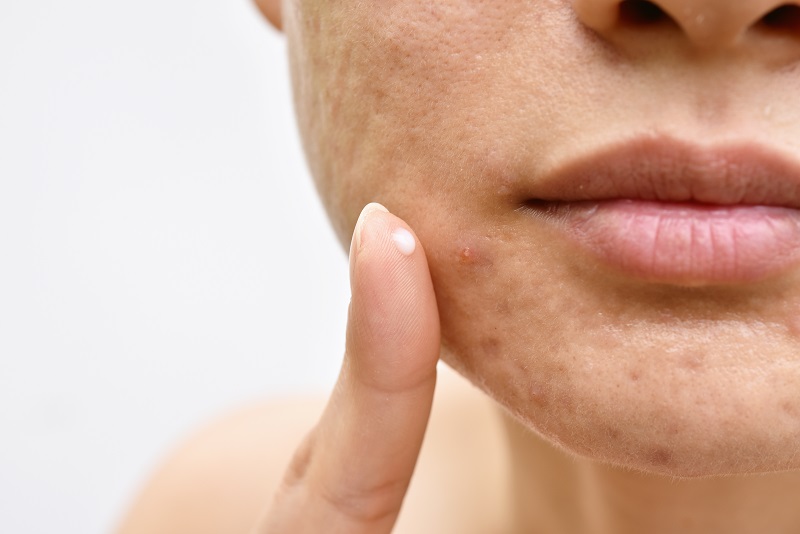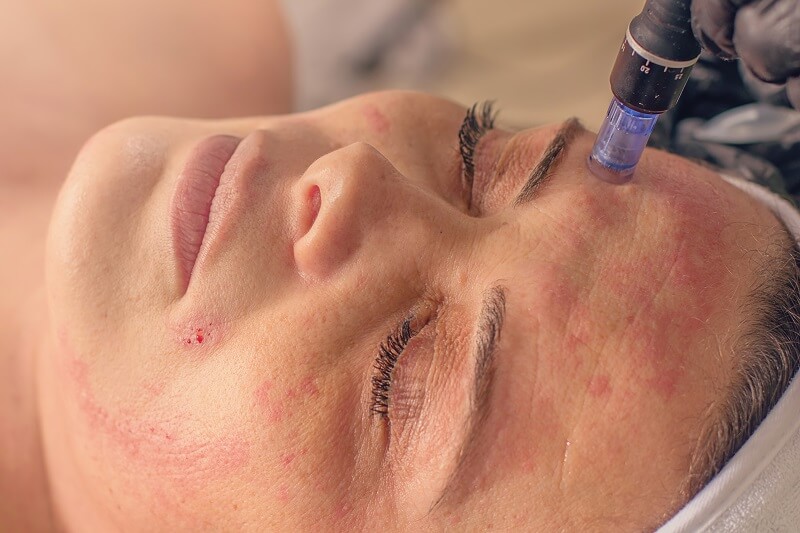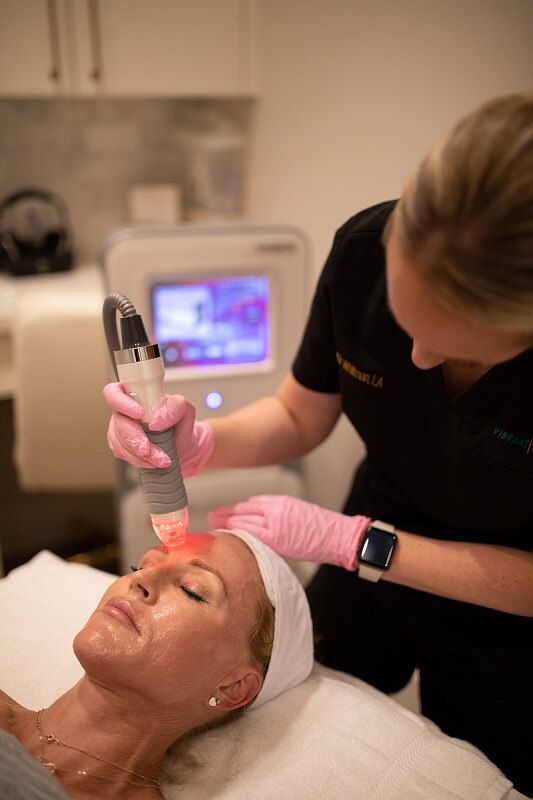Most people suffer from acne as teenagers, and many go through the ugly experience again in adulthood. Delayed acne treatment, picking at acne, or inadequate collagen production may result in acne scarring.
There is no easy cure for acne scars. Certain topical solutions, cosmetic treatments, and surgery may reduce their appearance. Let’s review the best treatments for acne scars.

How to Get Rid of Acne Scars: Acne Scar Treatment
There are three main categories of acne scars.
Atrophic scars are flat or indented impressions on the skin. They are divided into icepick, rolling, and boxcar scars.
Hypertrophic and keloid scars are raised lumps on the skin’s surface. Hypertrophic scars are usually the same size or smaller than the preceding acne, and keloids are usually bigger.
Your acne scar type will determine the right acne scar treatment for you.
Topical Solutions for Acne Scars

Topical solutions are effective for less severe acne scar removal. Namely, it’s most frequently used for removing atrophic scars. Acne scar products usually contain some of the following ingredients:
- Salicylic acid
- Glycolic acid
- Lactic acid
- Retinoids
Salicylic, glycolic, and lactic are hydroxy acids that make the skin peel, gently removing the damaged top layer. They may brighten discolored and hyperpigmented skin that results from acne. Retinoids speed up cell turnover and may reduce the appearance of scars.
Some products to consider if you have blemish-prone skin are SkinMedica’s AHA/BHA Exfoliating Cleanser and iS Clinical Active Serum. They are suitable for all skin types. They even out skin tone and smooth blemishes. However, they may not help with more severe acne scars.
Chemical Peels
Chemical peels are cosmetic treatments that use chemical solutions to dissolve damaged skin layers and reveal new, fresher-looking skin. People with atrophic scars may see results from chemical peels after a few sessions.
Microneedling

Microneedling is a cosmetic treatment that uses a device with tiny needles to puncture the skin. The process triggers the body’s natural response to injury—a boost in collagen production. Collagen builds new skin, evens out skin tone and texture, and minimizes the appearance of atrophic scars.
Laser Therapy
Laser therapy uses heat to create tiny wounds on the skin and initiate the body’s defense against injury. The new collagen produced rebuilds the skin and remodels the tissue in deeper layers. Laser therapy is an effective treatment for keloids and hypertrophic scars.
Tissue Augmentation
Tissue augmentation is an injectable cosmetic treatment that uses soft-tissue fillers to plump up the scar tissue and even out skin with atrophic scars.
Dermal fillers made with hyaluronic acid, poly-L-lactic acid, or calcium hydroxylapatite are commonly used in these procedures.
The results are temporary, and patients need to repeat the treatment every 6 to 18 months, depending on the scar size, to keep the effects.
Vivace Face Rejuvenation Therapy

Vivace is an innovative rejuvenation technology that uses a combination of microneedling, radiofrequency, and LED light. It boosts collagen and elastin production, rebuilds the skin, and reduces the appearance of scars.
Subcision
Subcision is a surgical procedure for atrophic scars. It uses a needle to disconnect the scar from the underlying tissue. The process causes the scarred area to move up and level with the rest of the skin. However, patients require additional cosmetic treatments to address discoloration after the surgery.
Cryotherapy
Cryotherapy is a cold therapy treatment for keloid and hypertrophic scars. It freezes the scar, reducing its size. It minimizes the appearance of scars but isn’t effective for acne scar removal. It may be combined with other treatments.
Corticosteroid Injections
Corticosteroid injections are used for keloid and hypertrophic scars. They are injected every four to six weeks to reduce the scar size. They improve the appearance of scarred skin but cannot fully eliminate the scars.
Sunscreen
Every skin needs protection from the sun’s damaging effects. Skin that is battling acne scars needs it even more. Whatever acne scar solution you choose, you need to apply sunscreen whenever you leave the house.
After hydroxy acids, retinoids, cosmetic treatments, and surgery, your skin is very sensitive. Exposure to the sun and other pollutants may negate the effects of the therapy and worsen your acne scar condition.
Products like Elta MD UV Clear and Alastin Hydratint Pro Mineral Sunscreen offer a high degree of protection against the sun and are suitable for all skin types, including skin that has undergone a cosmetic treatment.
Conclusion
It’s easy to feel hopeless when dealing with acne scars, but treatments exist. They may not fully eliminate the scars, but they can reduce their appearance. Talk to your dermatologist to determine your acne scar type and the best course of action for quick and effective results.


